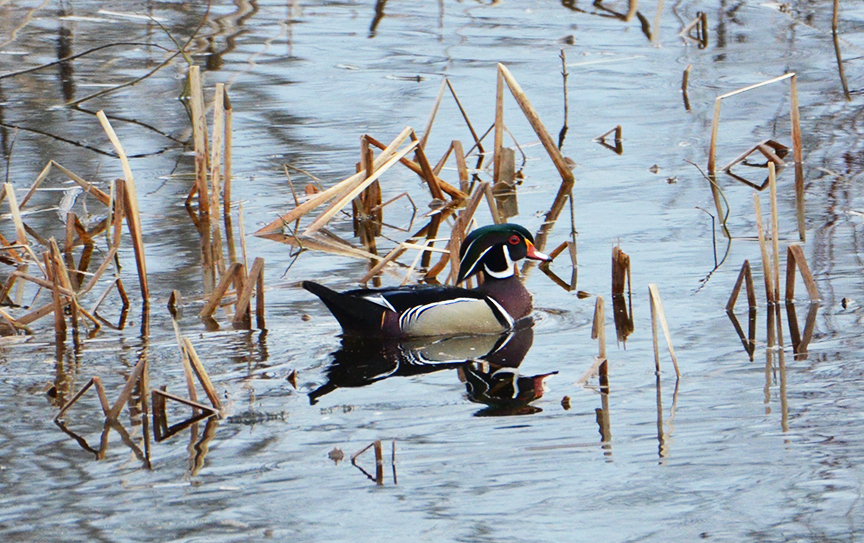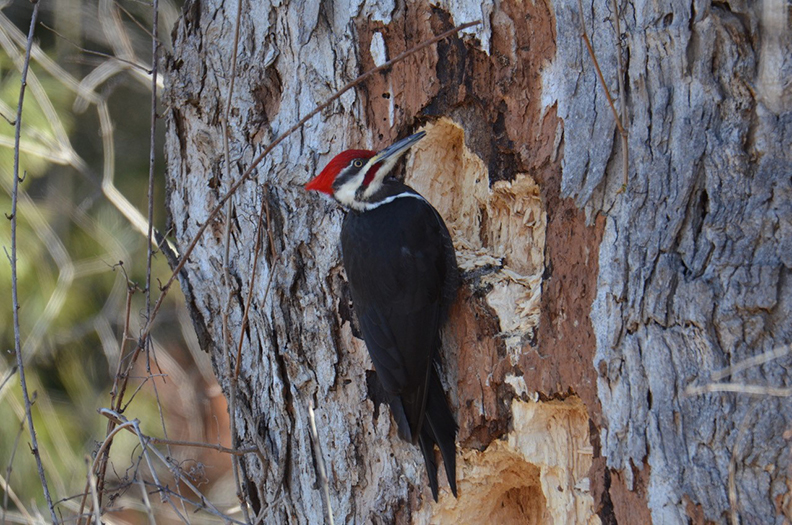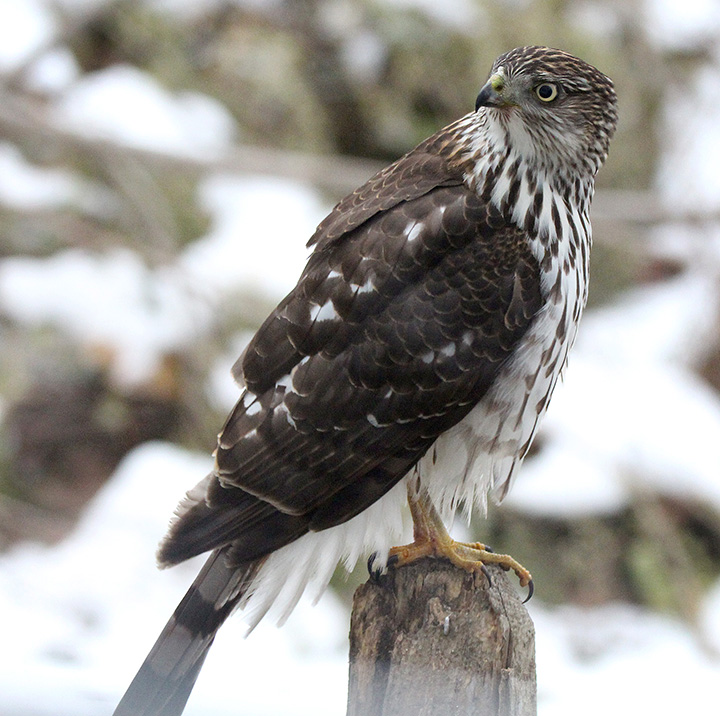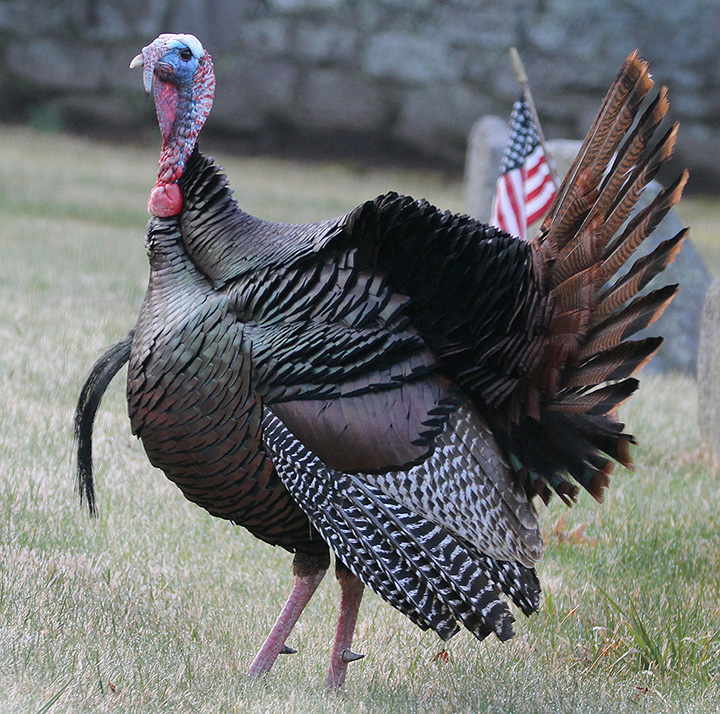Birds And Snow

PHOTO: Ducks, such as this wood duck, are well equipped for cold temperatures. Photo by Tom Thomson of Thomson Tree Farm in Orford, NH

by Chris Bosak
Weirs Times Columnist
Hummingbirds, warblers and other migratory songbirds face a slew of dangers on their northward and southward journeys: long water crossings, deforestation, lurking cats and other predators, starvation, tall glass buildings, wind turbines and hundreds of other threats.
But snow? How often is snow an obstacle for birds in May? Not often, but that’s what happened over the weekend when New England froze again and some parts even saw some snow.
Some of the early migrants should expect the threat of snow. Red-winged blackbirds arrive as early as February. Woodcock, eastern phoebes and osprey are among the March arrivals that may see snow. Even the early warblers, such as pine, yellow-rumped and palm, may see an odd mid-April snow.
The late-April and May migrants were likely caught off guard by this past weekend’s weather. I saw my first rose-breasted grosbeaks on May 1 and two ruby-throated hummingbirds showed up two days later. A bunch of new warblers showed up in that span as well. It’s not often that snow and late warblers overlap in New England.
According to the Boston Globe, the last time it snowed in Massachusetts in May was 1977. I did an internet search for “monthly snowfall totals in New Hampshire,” and I didn’t find a single website that even bothered to list May. Even April totals were scant.
So what do birds that aren’t used to seeing snow do when the temperature plummets and the white stuff falls? After all, they winter in South America, Central America, the Caribbean and extreme southern U.S. for a reason.
The birds will use some of the same techniques to survive the cold that our common winter birds use when the temperature drops. They will find shelter, fluff their feathers to trap warm air close to their bodies, eat as much as possible without expending too much energy and slow their metabolism. Some birds, such as the tiny hummingbirds, may enter a state of torpor in which they drop their body temperature and lower their heart rate.
Ducks, of course, can handle low temperatures just fine with their waterproof outer feathers and warm downy inner feathers.
A brief period of cold will present little problem for these birds. The biggest danger, and thankfully this wasn’t the case in New England this time, would be a heavy snowfall that lasts for an extended length of time. In such a case, availability of food, rather than the cold, would be the main problem. Most of the late migrants are insect eaters and if the bugs aren’t flying around or the larvae are hidden under the snow, the birds would suffer.
In fact, it is food availability, not necessarily cold temperatures, that drives these birds south for the winter. They follow the food.
While a May cold snap and snowfall may be an unwelcome inconvenience — for humans and birds — it is something we are well-equipped to handle.
Chris Bosak may be reached at chrisbosak26@gmail.com or through his website www.birdsofnewengland.com



